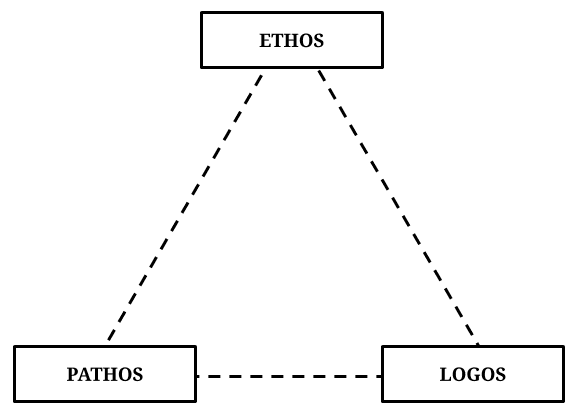Ethos, Pathos, Logos: how to persuade people
Curated from: nesslabs.com
Ideas, facts & insights covering these topics:
6 ideas
·3.85K reads
64
Explore the World's Best Ideas
Join today and uncover 100+ curated journeys from 50+ topics. Unlock access to our mobile app with extensive features.
“Persuasion is clearly a sort of demonstration, since [people] are most fully persuaded when we consider a thing to have been demonstrated.”
ARISTOTLE
65
868 reads
Aristotle called these the three artistic proofs. Combined together, they allow any orator to make their message more powerful, and increases their likelihood to convince their audience. While they are extremely advantageous skills to master in order to persuade people, they’re also useful in order to understand how you’re being persuaded yourself.
While ethos is focused on you, logos is focused on the message, and pathos on the audience.
63
631 reads
Ethos: appeal to authority
Ethos is all about building trust. It can be defined as how well you convince your audience that you are qualified to speak on the subject. It may seem obvious that if someone is listening to a talk about design, they’re more likely to believe a professional designer than a professional cook, but there are many ways to create credibility.
The most obvious one is to use credentials, either yours or by being introduced by a prominent authority in the field who can vouch for your expertise.
62
586 reads
Pathos: appeal to emotions
The terms empathy, sympathy and pathetic are all derived from the word pathos, which means “suffering” or “experience” in Greek. It consists in appealing to your audience’s emotions—to make them feel what you want them to feel by triggering specific emotional reactions. Great storytellers are usually skilled masters of this mode of persuasion.
62
563 reads
Logos: appeal to reason
Finally, you obviously need for your message to make sense—or at least to seem logical. Unfortunately, it is possible to use the three modes of persuasion to convince an audience of something wrong.
Logos is the way you present your arguments in a logical order, which must feel so straightforward and rational that no other alternative can be conceived by your audience.
61
545 reads
How to use ethos, pathos, and logos
- Establish ethos. You need to build your reputation by developing deep expertise in the topics you want to address.
- Develop pathos. Pathos is all about your ability to tell stories.
- Convey logos. With logos, your goal should be to make your message logical and understandable.
73
658 reads
IDEAS CURATED BY
Ness Labs provides content, coaching, courses and community to help makers put their minds at work. Apply evidence-based strategies to your daily life, discover the latest in neuroscience research, and connect with fellow curious minds.
CURATOR'S NOTE
Scholars have discussed the mechanics of persuasion since ancient times. Persuasion encompasses every aspect of culture, with rhetoric as a crucial tool to influence every sphere of society, from mundane negotiations to big national debates. One could argue any form of communication is a form of persuasion. Whether through writing or talking, at home or at work, with friends or customers, chances are you spend a good amount of your time trying to persuade someone of something. In Rhetoric, Aristotle defines three main ways to persuade people: ethos, pathos, and logos.
“
Ness Labs's ideas are part of this journey:
Learn more about communication with this collection
How to challenge assumptions
How to generate new ideas
How to break out of traditional thinking patterns
Related collections
Similar ideas
34 ideas
Aristotle’s Modes Of Persuasion (Or Modes Of Appeal)
changeboard.com
6 ideas
What Is Rhetoric, and Why Is It Important?
grammarly.com
Read & Learn
20x Faster
without
deepstash
with
deepstash
with
deepstash
Personalized microlearning
—
100+ Learning Journeys
—
Access to 200,000+ ideas
—
Access to the mobile app
—
Unlimited idea saving
—
—
Unlimited history
—
—
Unlimited listening to ideas
—
—
Downloading & offline access
—
—
Supercharge your mind with one idea per day
Enter your email and spend 1 minute every day to learn something new.
I agree to receive email updates


